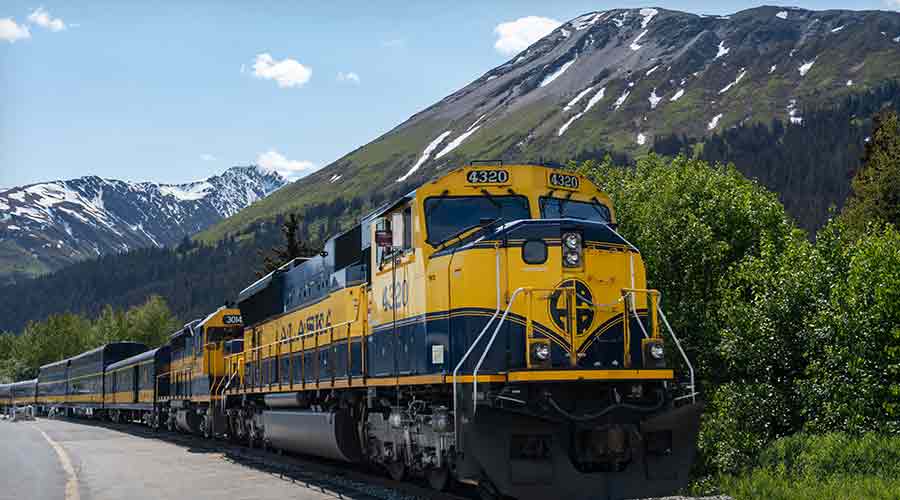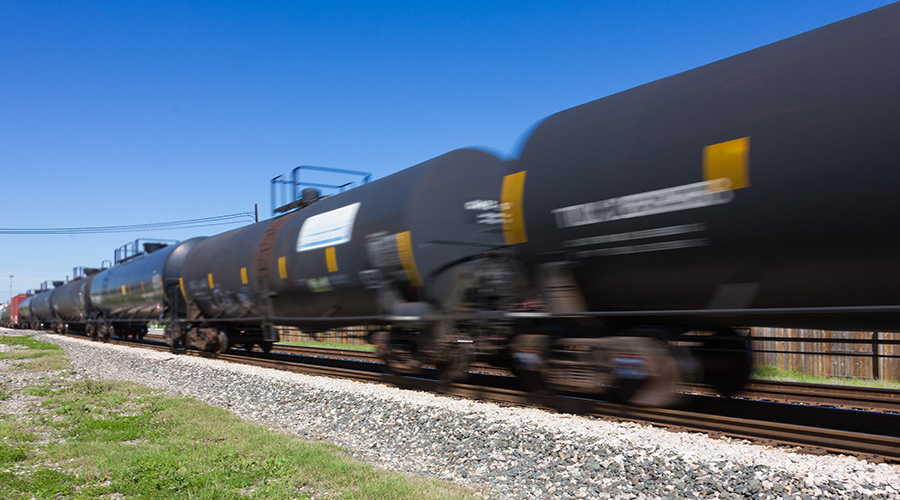Freight service will benefit from several 'Fed-State National' passenger-rail grants
12/19/2023
By Julie Sneider, Senior Editor
On Dec. 8, the Federal Railroad Administration awarded $8.2 billion in grants for 10 passenger-rail projects across the country, and announced corridor planning activities that will impact every region nationwide.
The grants are funded through the Federal-State Partnership for Intercity Passenger Rail (Fed-State National) Program, which will advance two high-speed rail corridors and fund improvements to existing rail corridors for expanded service and performance, FRA officials said in a press release.
The FRA also identified dozens of rail corridors across 44 states that will drive future passenger-rail expansion. Created under the Infrastructure Investment and Jobs Act (IIJA) President Biden signed in November 2021, the FRA picked 69 regions to receive $500,000 in funding for studies of new or expanded passenger-rail service. The corridor selections were divided into four categories: new high-speed rail; new conventional rail; existing routes with planned extensions; and existing routes with planned improvements to stations or to increase service frequency or trip times.
Eligible applicants for the corridor ID program were Amtrak, individual states, groups of states, interstate compacts, regional passenger rail authorities, regional planning organizations, political subdivisions of a state; and federally recognized Indian Tribes.
While the Fed-State National grants center on funding projects that will create greater access to intercity passenger rail, freight railroads are involved in many of the federal-state and corridor ID initiatives. In those situations, projects can’t proceed without the cooperation of the Class Is on whose tracks the Amtrak, commuter and high-speed trains would operate.
The $8.2 billion in grants are in addition to the $16.4 billion in grants awarded in November to 25 passenger-rail projects along Amtrak’s Northeast Corridor between Boston and Washington, D.C. Several of those projects also will benefit freight-rail operations.
Following are the Fed-State National partnership grants announced Dec. 8 that include a freight-rail element. Project descriptions were sourced from the FRA’s website and fact sheets.
Alaska
• Alaska Railroad Corp. bridge replacement, $8.2 million. Sponsored by the Alaska Railroad Corp., the $10.3 million project involves project development, final design and construction to support the replacement of the aging bridge in Willow on the railroad’s North Corridor mainline, which is used by freight and intercity passenger trains. The new bridge will be able to withstand the dynamic forces of the waterway and mitigate future scouring and erosion. The project is designed to improve system and service performance on the mainline, which has experienced increasing demand for regularly scheduled intercity passenger-rail service between Anchorage and Fairbanks. It will also remove rail-car load weight restrictions to allow for unrestricted 286,000-pound freight cars; eliminate the need to add speed restrictions; and enhance the safety of train operations. Alaska Railroad will provide a 20% nonfederal match. Expected construction dates: 2025-2026.
California
• California Inaugural High-Speed Rail Service, $3 billion. Sponsored by the California High-Speed Rail Authority (CHSRA) — which is part of the larger multiphase high-speed rail line construction — involves the following: design and right-of-way acquisition for the Merced extension (Madera to Merced) and Bakersfield extension (from Poplar Avenue in Shafter to Bakersfield); civil, track and systems construction for the 13-mile Bakersfield interim extension; design and construction of Fresno Station; and design and procurement of trainsets, as well as design and construction of trainset facilities. The project is designed to provide a competitive transportation mode with estimated speeds of at least 186 mph, resulting in a proposed trip time from Merced to Bakersfield in under 60 minutes. The project will improve safety with the separation of rail from BNSF Railway Co and Union Pacific Railroad mainlines. CHSRA will provide a 20% nonfederal match toward the project’s $33 billion cost. Expected construction dates: 2025-2029.
Maine
• Downeaster Corridor Track Improvement, $27.5 million. Sponsored by the Northern New England Passenger Rail Authority, the project involves project development, final design and construction activities for track improvements on CSX’s mainline from Brunswick to the Massachusetts state line. Designed to improve safety and rail performance, the project will help maintain a state of good repair, reducing the need to impose slow orders on the Amtrak Downeaster service that would result in delays and longer travel times. Also, the project will support future expansion. CSX will provide a 20% nonfederal match toward the $34.3 million project. Expected construction dates: 2024-2025.
 In Maine, the Downeaster Corridor Track Improvement Project was awarded a $27.5 million grant. Sponsored by the Northern New England Passenger Rail Authority, the program calls for project development, final design and construction activities for track improvements on CSX’s mainline from Brunswick to the Massachusetts state line. shutterstock.com/John M. Chase
In Maine, the Downeaster Corridor Track Improvement Project was awarded a $27.5 million grant. Sponsored by the Northern New England Passenger Rail Authority, the program calls for project development, final design and construction activities for track improvements on CSX’s mainline from Brunswick to the Massachusetts state line. shutterstock.com/John M. Chase
Montana
• Malta Corridor Operational Enhancement, $14.9 million. Sponsored by Amtrak, the project involves final design and construction for track, bridge, signal and other infrastructure improvements on BNSF’s track, on which Amtrak Empire Builder long-distance service operates, in the Malta area and at the Amtrak Malta Station. Designed to eliminate bottlenecks for freight and passenger trains, the project is expected to improve on-time performance, safety, capacity and efficiency. Amtrak and BNSF will provide a 20% nonfederal match to the $18.6 million project.
North Carolina
• Raleigh to Richmond Innovating Rail Program, Phases 1A and 2, $1.1 billion. Sponsored by the North Carolina Department of Transportation (NCDOT), the project is part of a multiphase project to create a new passenger-rail route between Raleigh, North Carolina, and Richmond, Virginia, along the CSX “S Line” as part of the Southeast Corridor that will connect North Carolina with Virginia, Washington, D.C., and the Northeast Corridor. This funded aspect of the project entails final design, right-of-way acquisition and construction to build additional parts to the Southeast Corridor from Raleigh to Wake Forest, including new and upgraded track, 11 grade separations and the closure of multiple grade crossings. When it’s completed, the new route will save passengers 11 minutes per trip. NCDOT and Amtrak will provide a 20% nonfederal match to the $1.4 billion project. Expected project construction: 2024-2033.
Pennsylvania
• Pennsylvanian Rail Modernization, $143.6 million. Sponsored by the Pennsylvania Department of Transportation (PennDOT), the project calls for right-of-way acquisition and final design and construction for track and signal-related improvements along Norfolk Southern Railway’s main line between Pittsburgh and Harrisburg. The project is designed to improve system and service performance of freight trains and Amtrak’s Pennsylvanian service with more capacity and other upgrades, which will enable a second daily round trip of Amtrak service. Also, the project is expected to help increase safety and improve reliability of all train operators. PennDOT will provide a 20% nonfederal match toward the $180 million project. Expected project construction dates: 2024-2030.


